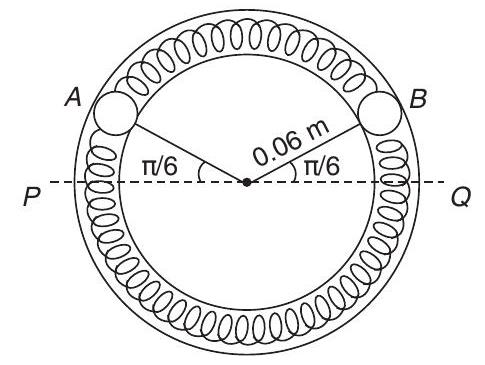Simple Harmonic Motion 4 Question 15
15. Two identical balls

(a) Calculate the frequency of oscillation of ball
(b) Find the speed of ball
(c) What is the total energy of the system?
Show Answer
Answer:
Correct Answer: 15. (a)
(b)
(c)
Solution:
- Given, mass of each block
Radius of circle,

Natural length of spring
In the stretched position elongation in each spring
Let us draw FBD of
Spring in lower side is stretched by
Restoring torque of this force about origin
Since,
Eq. (i) can be rewritten as
(a) Frequency of oscillation,

Substituting the values, we have
(b) In stretched position, potential energy of the system is
and in mean position, both the blocks have kinetic energy only. Hence,
From energy conservation
Substituting the values
(c) Total energy of the system,
or
or






